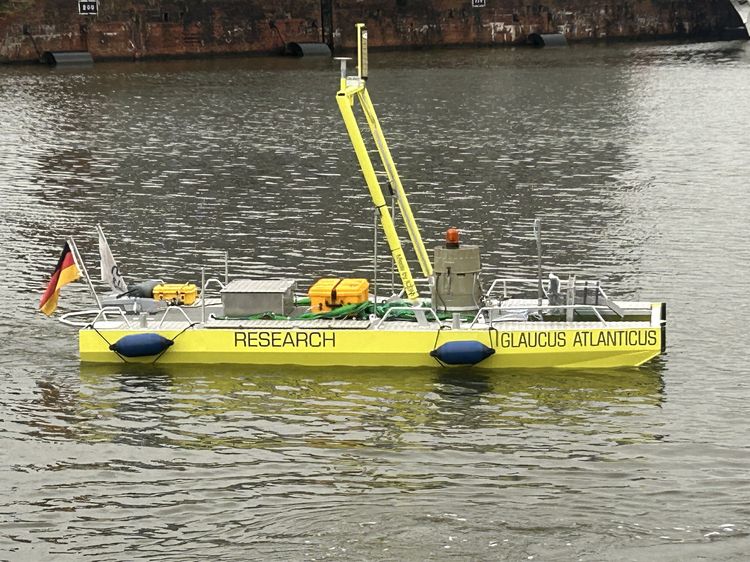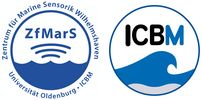Head

Prof. Dr. OLIVER WURL
GLAUCUS ATLANTICUS
Our second catamaran, GLAUCUS A., enhances our fleet with unique features. This catamaran is named after Glaucus Atlanticus, a strikingly beautiful and venomous sea snail that swims on the ocean surface and is distinguished by its bright colors and unique adaptations. The catamaran GLAUCUS A. is based on our first catamaran Sea Surface Scanner, which has gathered over 1 million "true" sea surface data points from the North Pole to the tropical Pacific from 2015 to 2022.
Having no autonomous capabilities, GLAUCUS A. is designed for more straightforward deployment and operation but offers distinct features compared to HALOBATES. Notably, GLAUCUS A. features a bottle carousel that can be filled with microlayer and bulk water for subsequent laboratory analysis. A total of 24 bottles can be filled at the pilot's command via the radio controller. The study of the sea-surface microlayer has faced constraints due to the tedious process of manual sampling using hand-held glass plate samples. The unique sampling method employed by GLAUCUS A. and HALOBATES enables the efficient collection of large-volume samples from the microlayer in a highly consistent manner, facilitating subsequent volume-demanding laboratory-based analyses. Additionally, GLAUCUS A. can accommodate various payloads of flow-through sensors tailored to the specific scientific mission, with a current emphasis on investigating optical properties (also in collaboration with the Marine Sensor Systems group and R. Röttgers from HEREON) and inorganic carbon chemistry (link to our lab facilities).
Our catamaran GLAUCUS A. has an operational time of 4-6 hours and is navigated by a pilot from the ship’s deck. It can also serve as a drifting platform for much longer to investigate temporal dynamics of the sea-surface microlayer in the same mass of water. Like HALOBATES, high-resolution measurements of 0.1 Hz on board allow us to resolve dynamics at the boundary between the ocean and atmosphere on previously unexplored scales.


